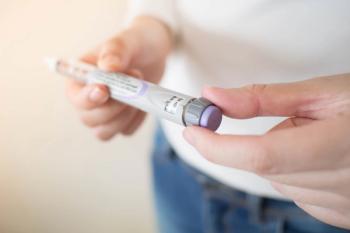President Biden’s 2022 Inflation Reduction Act (IRA) is meant to put money back into the pockets of Medicare beneficiaries.1 However, with leaders pushing back against Big Pharma, researchers are concerned with how drug companies will react to the implementation of this legislation.
“Because of the President’s lower cost prescription drug law, the Inflation Reduction Act, which establishes the Medicare Prescription Drug Inflation Rebate Program, some people with Medicare who use these drugs during that time period may save between $1 and $3,575 per average dose depending on their individual coverage,” wrote the Department of Health and Human Services (HHS).1
Key Takeaways
- The Inflation Reduction Act, among other uses, was designed to save money for Americans utilizing Medicare insurance plans.
- With government push back against drug manufacturers, researchers have expressed concerns about how manufacturers will react to the implications of the Inflation Reduction Act.
Designed to stunt the increasing rise of Medicare-covered prescription drugs, companies will be forced to pay the CMS a rebate if their drug costs rise faster than inflation. These rebates will be stored in the Federal Supplementary Medical Insurance Trust Fund for future Medicare benefits.1
However, despite researchers highlighting the IRA’s ability to increase access to several Medicare Part B, and Part D, prescription drugs, they have raised concerns about what drug companies will do to adjust to the legislation following 2023.2
Researchers analyzed 10 drugs covered by Medicare Part D in 2019 and compared them to their coverage percentages in 2023. They also explored prior authorization and accessibility without step therapy for each drug.2
“Among the 10 drugs, average coverage was generally high in 2019 (3345 plans [82.0%]) and further increased in 2023 (4362 plans [91.3%]), with coverage numerically improving over the study period for 3 of the 4 drugs with the lowest coverage in 2019: ustekinumab (31.6% to 70.1%), dapagliflozin (60.8% to 88.6%), and etanercept (71.8% to 99.2%),” wrote Patterson et al.2
Furthermore, of the 10 drugs observed in the study, coverage percentages rose for all but 2 drugs from 2019 to 2023. Those drugs were insulin aspart and sitagliptin, both of which saw access increases in other areas, specifically in access without prior authorization and step therapy.2
“Access without prior authorization was common for cardiovascular and diabetes medications but rare for biologic drugs etanercept and ustekinumab as well as oncology drug ibrutinib in both 2019 and 2023,” they continued.2 “In contrast, access without step therapy was high across all 10 selected drugs in both study years.”
READ MORE: Medicare Part D Spending Reaches $48 Billion on Top 10 Drugs
In this analysis, researchers mapped out Medicare Part D coverage for drugs supported under the IRA. With access increasing almost across the board for these 10 drugs in the past 5 years, this should be all good news for patients covered by Medicare.
But researchers are concerned that this might not be the case.
“These findings support concerns about future access waning through increased utilization management and adverse tiering, which, consistent with past research, were already common for selected biologic and oncology drugs. While the IRA’s formulary inclusion requirement will improve access to selected drugs previously excluded from plan formularies, considerable uncertainty remains about how the CMS will monitor practices that may undermine enrollee access to selected drugsand how actionable the formulary review process alone can be in protecting meaningful access,” they wrote.2
When it comes to drug pricing, utilization management and adverse tiering are just a few of the many ways insurance plans can hold so much leverage.
While the IRA is slowly putting blockades in front of the key factors known to drive drug costs, insurers still have the ability to place specific drugs on certain pricing tiers to incentivize or steer beneficiaries to buy certain prescription drugs.
However, as Americans prepare for future actions from drug companies as a response to the IRA, out-of-pocket costs are guaranteed to cap off in the next 2 years.
“As of January 1, 2024, some people enrolled in Medicare Part D who have high drug costs have their annual out-of-pocket costs capped at about $3,500. In 2025, all people with Medicare Part D will benefit from a $2,000 cap on annual out-of-pocket prescription drug costs,” concluded the HHS.1
READ MORE: How Will Patients Benefit From Medicare Drug Price Negotiations?
References
1. U.S. Department of Health and Human Services. HHS announces savings for 41 prescription drugs thanks to inflation rebates from the Biden-Harris administration’s lower cost prescription drug law. hhs.gov. Published March 26, 2024.
2. Patterson JA, Wagner TD, O’Brien JM, Campbell JD. Medicare Part D Coverage of Drugs Selected for the Drug Price Negotiation Program. JAMA Health Forum. 2024;5(2):e235237. doi:10.1001/jamahealthforum.2023.5237

























































































































